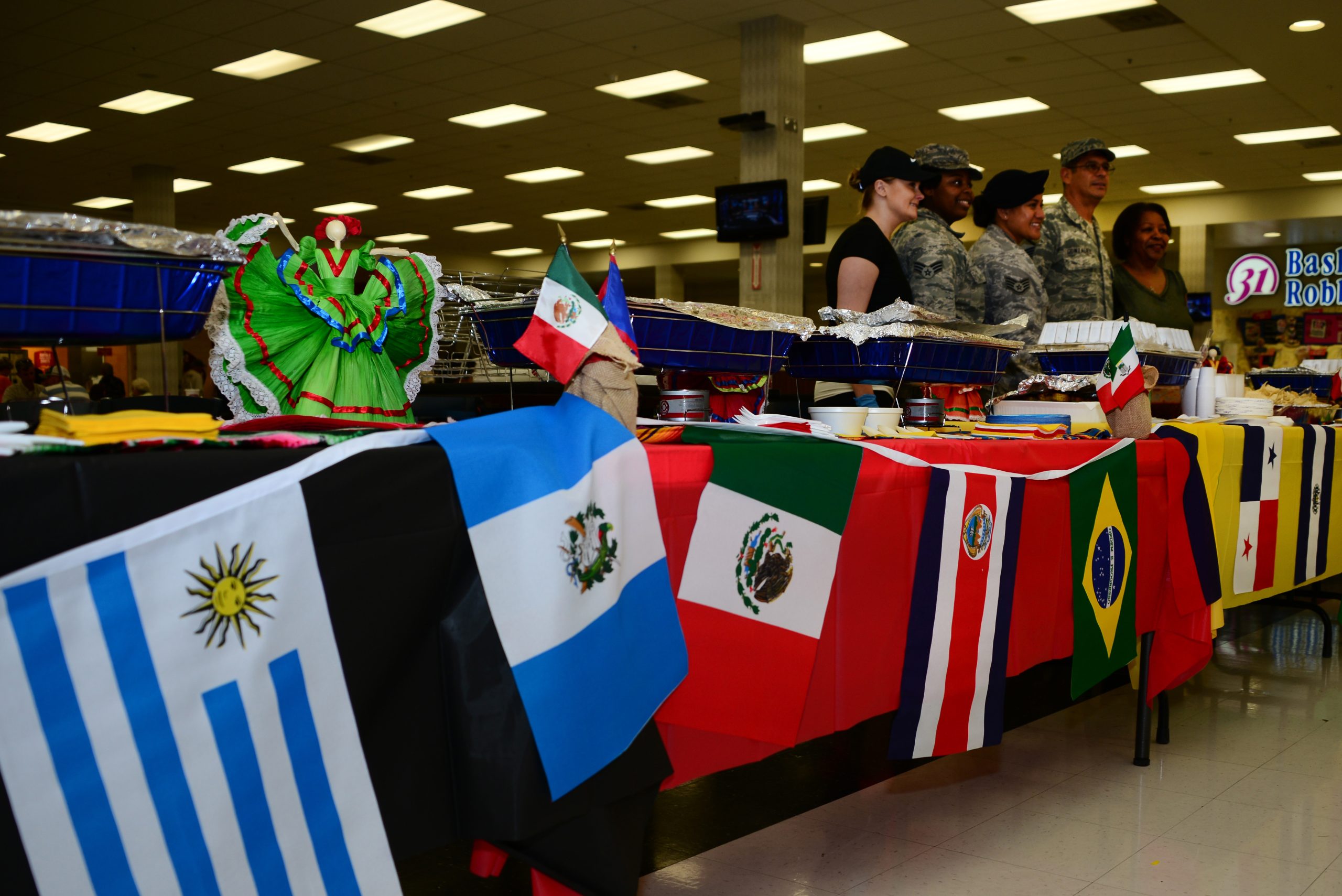3
Sandra Antoine Tiffany, LLMSW

Sandra Tiffany, a limited licensed master social worker, received her Bachelor of Anthropology degree, with a specialization in Native American cultures, at Michigan State University. She earned her Master’s in Social Work degree at Ferris State University. The majority of her practice experience has been in Medical Social Work. Her research interests include drug and alcohol addictions, with particular emphasis on its effect on the family unit; service inequities among diverse populations; and culture and diversity in social work education and practice. Sandra currently serves as a facilitator for Randy’s House in Greenville, MI. She earned her Recovery Coach certificate and is affiliated with several service organizations.
Introduction
What is culture? Many individuals think of culture as something that is different from them. They may think of culture as something they desire to have; they mistakenly do not realize that everyone has culture. Culture is something that all of us have but because we live it, we do not realize that it is there. When we think of culture, we think of many different ways of life for others; we often neglect to understand that what we do in our everyday lives is different than others. We simply think of our lifestyles as “normal,” not cultured.
This chapter will explore various aspects of human diversity with a focus on the importance of understanding culture specifically for social workers to perform their ethical responsibility to be culturally competent. In this chapter we will clarify basic concepts, define key terms, discuss a variety of different cultures and begin to understand why this topic is of utmost importance to the social work profession. Let’s begin with defining culture.

Culture
Many different disciplines perceive culture and cultural identity differently; therefore we will begin with a general definition then expand to a more specific definition as it relates to social work.
General Definition
Several general definitions of culture include:
1. A configuration of learned behaviors and results of behavior whose component elements are shared and transmitted by the members of a particular society (Linton, 1945)
2. The shared knowledge and schemes created by a set of people for perceiving, interpreting, expressing, and responding to the social realities around them (Lederach, 1995)
3. Learned and shared human patterns or models for living; day-to-day living patterns, these patterns and models pervade all aspects of human social interaction
(Damen, 1987)
Culture has been defined in a number of ways, but most simply as the learned and shared behavior of a community of interacting human beings (Useem & Useem, 1963).
Social Work Definition
There is no standard popular definition or explanation of ‘culture’ in social work literature. Culture is often used synonymously and confusingly with the word ‘ethnicity’. From a social work perspective, culture has been defined well by Cindy Garthwait, MSW (2012) as: customs, beliefs, ideology, world-view, and values common to a group of people and which guide their individual and social behavior. More specifically, it is the product of the values, ideas, perceptions, and meanings which have evolved over time. These values, ideas, perceptions, and meanings constitute the individual’s knowledge and understanding of the world in which he or she lives.
They derive from:
- physical environment of birth and upbringing
- language
- institutions
- family and social relationships
- child rearing
- education
- systems of belief
- religion, mores and customs
- dress and diet
- particular uses of objects and material life
Culture embraces all of these, and the individual may regard each of them, or any number of them, as culturally significant. There is some consensus that culture is shared patterns of behavior and interactions, cognitive constructs and understanding that are learned by socialization. No matter the culture of an individual, one thing is for certain, it will change. Culture appears to have become key in our interconnected world which is made up of so many ethnically diverse societies, but also riddled by conflicts associated with religion, ethnicity, ethical beliefs, and the elements which make up culture. Culture is no longer fixed, if it ever was. It is essentially fluid and constantly in motion. This makes it difficult to define any culture in only one way.
image
Race and Ethnicity
Now that we have an understanding of the concept of culture, let’s discuss race and ethnicity. First, we need to have a basic understanding of ethnocentrism and how it affects our thinking and judgments. Ethnocentrism is a commonly used word in circles where ethnicity, inter-ethnic relations, and similar social issues are of concern. The usual definition of the term is “thinking one’s own group’s ways are superior to others” or “judging other groups as inferior to one’s own.” “Ethnic” refers to cultural heritage, and “centrism” refers to the central starting point… so “ethnocentrism” basically refers to judging other groups from our own cultural point of view. But even this does not address the underlying issue of why people misjudge others.
Most people, using a superficial definition, believe that they are not ethnocentric, but are rather “open minded” and “tolerant.” However, everyone is ethnocentric and there is no way not to be ethnocentric; it can neither be avoided because we only know what we have experienced in our own reality nor can it be willed away by a positive or well-meaning attitude. Yet this can have consequences within our own society and in international relations. We may be well meaning in inter-ethnic relations, for example, but can unintentionally offend others, generate ill feelings, and even set up situations that harm others. For example, it is easy not to see the life concerns of others (particularly minorities and the disadvantaged) or conversely to pity them for their inabilities to deal with life situations (like poverty or high crime rates). How do we feel when someone doesn’t recognize our concerns or feels sorry for us because we can’t “just let go” of a stressful situation?
A lack of understanding can also inhibit constructive resolutions when we face conflicts between social groups. It is easy to assume that others “should” have certain perspectives or values. How often are we prone to address conflicts when others tell us how we should think and feel? It can, however, be an opportunity to recognize and resolve our own biases and to learn more about potentials we all have for being human… a lifelong process of learning and growth.
What is the difference between race and ethnicity? Many people tend to think of race and ethnicity as one and the same. Often the words are used interchangeably. Looking up the definition in a dictionary doesn’t usually make it any clearer. However, these two words do have separate meanings. Understanding their distinctions is significant and increasingly important, particularly because diversity in the world is continuing to grow. This is especially important as social workers in terms of advocating and practicing non-discrimination.
What Is Race?
Race is a powerful social category forged historically through oppression, slavery, and conquest. Most geneticists agree that racial taxonomies at the DNA level are invalid. Genetic differences within any designated racial group are often greater than differences between racial groups. Most genetic markers do not differ sufficiently by race to be useful in medical research (Duster, 2009; Cosmides, 2003).
Stated simply, race is the word used to describe the physical characteristics of a person. These characteristics can include everything from skin color, eye color, facial structure, or hair color. This term is physiological in nature and refers to distinct populations within the larger species. Race was once a common scientific field of study. Today, however, most scientists agree that genetic differences among races do not exist which means we are all the same inside. Clearly, we all have the same make-up which consists of vitamins, minerals, water, and oxygen.
What Is Ethnicity?
Ethnicity denotes groups, such as Irish, Fijian, or Sioux, for example, that share a common identity-based ancestry, language, or culture. It is often based on religion, beliefs, and customs as well as memories of migration or colonization (Cornell & Hartmann, 2007). In scientific analysis, it can be important to distinguish between race and ethnicity. Biological anthropologist, Fatimah Jackson (2003), provides a pertinent example of cultural practices being misread as biological differences. Micro ethnic groups living in the Mississippi Delta, she writes, use sassafras in traditional cooking. Sassafras increases susceptibility to pancreatic cancer. Medical practitioners who do not carefully disaggregate cultural and biological traits might interpret a geographic cluster of pancreatic cancer as related to a genetic or racial trait when, in fact, the disease is produced by cultural practices—in this case, shared culinary habits.
Ethnicity, on the other hand, is the word used to describe the cultural identity of a person. These identities can include language, religion, nationality, ancestry, dress, and customs. The members of a particular ethnicity tend to identify with each other based on these shared cultural traits. This term is considered anthropological in nature because it is based on learned behaviors.
Difference between Race and Ethnicity
One example of the difference between these two terms can be seen by examining people who share the same ethnicity. Two people can identify their ethnicity as American, yet their races may be black and white. Additionally, a person born of Asian descent that grew up in Germany may identify racially as Asian and ethnically as German. People who share the same race may also have distinct ethnicities. For example, people identifying as white may have German, Irish, or British ethnicity.
Socially Constructed Differences
Some researchers believe that the idea of race and ethnicity has been socially constructed. This is because their definitions change over time, based on widely accepted public opinion. Race was once believed to be due to genetic differences and biological morphologies. This belief gave way to racism, the idea of racial superiority and inferiority. For example, when Italian immigrants began arriving in the United States, they were not considered part of the “white race.” The same is true of Irish and Eastern European immigrants. The widely accepted view that these individuals were not white led to restrictions of immigration policies upon the arrival of “non-white” immigrants. In fact, during this time, people from these areas were considered of the “Alpine” or “Mediterranean” races. Today these race categories no longer exist. Instead, due to policy changes, people from these groups began to be accepted into the wider “white” race. They are now identified as individual ethnic groups. This shows that, like the idea of race, the idea of ethnicity also changes over time based on widely held public opinion.
Humans vary remarkably in wealth, exposure to environmental toxins, and access to medicine. These factors can create health disparities. Krieger (2000) describes disparities that result from racial discrimination as “biological expressions of race relations.” African Americans, for example, have higher rates of mortality than other racial groups for 8 of the top 10 causes of death in the U.S. (Race, Ethnicity, and Genetics Working Group, 2005). Although these disparities can be explained in part by social class, they are not reducible to class distinctions.
When we talk about power and privilege, we talk in terms of race, ethnicity, gender and class. And with good reason as these are some of the strongest cases of privilege in our culture. We also need to understand that one of the strongest aspects of power and privilege is that very often those who have it are not even aware of the extent of their privilege.
Racism and Prejudice
According to Gordon Allport, an American psychologist, Prejudice is an affective feeling toward a person or group member based solely on their group membership. The word is often used to refer to preconceived, usually unfavorable, feelings toward people or a person because of their beliefs, values, race/ethnicity, or other personal characteristics (Allport, 1979). In this case, it refers to a positive or negative evaluation of another person based on their perceived group membership.
If you open a dictionary, the definition that typically falls under “racism” is: a belief or doctrine that inherent differences among the various human racial groups determine cultural or individual achievement, usually involving the idea that one’s own race is superior and has the right to dominate others or that a particular racial group is inferior to the others.But racism is a lot more complicated than that. Racism is a “learned” form of hate that can be unlearned. It is systemic and institutional; basically it is prejudice plus power (influence, status and authority). Laws, restrictions and other norms in our society have been created by the majority in order to create these prejudices against another, differing group. For example, these things can include: slavery, wage gap, workplace and employment discrimination, police brutality, and so on.
There are many other definitions and concepts that make up this giant, tangled web. For example, with “white privilege,” people who are white benefit from societal structures simply by existing in them. Of course, some people do not consciously choose to benefit, but that doesn’t mean there isn’t a type of advantage for them. You may not hate someone for the color of his/her skin, but you may benefit from the systems that have been set up.
White privilege does not mean that white people have or grew up with everything handed to them. Being privileged does not mean someone had or has an easy life. The thing about privilege is that it can make people blind to struggles they are not aware of.
In 1989, Wellesley College professor Peggy McIntosh wrote an essay called “White Privilege: Unpacking the Invisible Knapsack.” McIntosh observes that people who are white, in the U.S. are “taught to see racism only in individual acts of meanness, not in invisible systems conferring dominance on my group.” To illustrate these invisible systems, McIntosh wrote a list of 26 invisible privileges whites benefit from.
McIntosh (1989) further describes white privilege as an “invisible package of unearned assets, which one can count on each day. White privilege is like an invisible weightless knapsack of special provisions, maps, passports, code books, visas, clothes, tools, and blank checks.”
Minority Groups
The term “minority” is applied to various groups who hold few or no positions of power in a given society. The term minority doesn’t necessarily refer to a numeric minority. Women, for example, make up roughly half the population but are often considered a minority group.
Minority does not just refer to a statistical measure and can instead refer to categories of persons who hold few or no positions of social power in a given society. For example: gender and sexuality minorities, religious minorities, and people with disabilities.
Gender and Sexuality Minorities

Recognition of lesbian, gay, bisexual, and transgender people as a minority group or groups has gained prominence in Western culture since the nineteenth century. The abbreviation “LGBTQ” is currently used to group these identities together. The term queer is sometimes understood as an umbrella term for all non-normative sexualities and gender expressions but does not always signify a minority; rather, as with many gay rights activists of the 1960s and 1970s, it sometimes represents an attempt to highlight sexual diversity in everyone.
There is a growing realization that sexual and gender minorities face discrimination, violence, and criminalization. For example, nearly eighty countries criminalize homosexuality in some way (Park, 2016). Cultural stigma prohibits sexual and gender minorities from reaching their full potential. Stigma is an attribute, or mark on, another person. In the context of social interaction, it is a shared belief about someone’s characteristics and traits.
For example, the attribute might be wearing a turban. Many people might share a belief that a man wearing a turban is dangerous. Stigma assigns meaning to an otherwise meaningless attribute such as wearing a turban equates to certain political beliefs.
Gender minorities can be identified and grouped according to any one of the three different categories:
- People whose inter self-identity does not match gender assigned at birth
- People whose gender expression (or socially assigned gender) does not match gender assigned at birth
- People whose social expression does not conform to relevant cultural norms and expectations of gender.
Sexual minorities can be identified and grouped according to:
- People who describe themselves using sexual minority terminology
- People whose sexual partners are the same gender, or a minority gender
- People who experience attraction to individuals of the same or a minority gender
While in most societies the numbers of men and women are roughly equal, the status of women as an oppressed group has led some, such as feminists and other participants in women’s rights movements, to identify them as a minority group.
Religious Minorities

Persons belonging to religious minorities have a faith which is different from that held by the majority population or the population group that is in power. It is now accepted in many multicultural societies around the world that people should have the freedom to choose their own religion as well as including not having any religion (atheism or agnosticism), and including the right to convert from one religion to another. However, in some countries, this freedom is still either formally restricted or subject to cultural bias from the majority population.
For example, Burma’s population is 90 percent Theravada Buddhist, a faith the government embraces and promotes over Christianity, Islam and Hinduism. Minority populations that adhere to these and other faiths are denied building permits, banned from proselytizing and pressured to convert to the majority faith. Religious groups must register with the government, and Burmese citizens must list their faith on official documents. Burma’s constitution provides for limited religious freedom, but individual laws and government officials actively restrict it (U.S. Commission on International Religious Freedom, 2016).
People with Disabilities

The disability rights movement has contributed to an understanding of people with disabilities as a minrity or a coalition of minorities who are disadvantaged by society, not just as people who are disadvantaged by their impairments. Advocates of disability rights emphasize differences in physical or psychological functioning rather than inferiority: for example, some people with autism argue for acceptance of neuro-diversity in the same way opponents of racism argue for acceptance of ethnic diversity. The deaf community is often regarded as a linguistic and cultural minority rather than a group with disabilities, and some deaf people do not see themselves as having a disability at all. Rather, they are disadvantaged by technologies and social institutions that are designed to cater to the dominant, hearing-unimpaired group.
Immigration
Immigration involves the permanent movement from one country to another. Social workers are often called upon to work with immigrants. Immigrants represent a significant portion of the U.S. population. In 2010, 40 million people (12.9%) of the total population were foreign-born (U.S. Census Bureau, 2010).
People with different national origins often find it difficult to integrate into mainstream culture, especially when language barriers exist or they experience immigration issues. Social workers play a crucial role in many immigration cases. A social worker is often the first person people talk to about their immigration struggles. Social workers often help clients gather key evidence, write detailed evaluations, assist with citizenship or change of legal status, or are the primary contact with police officers. There is a range of immigration status which immigrant children, youth and parents may hold. Immigrants may fall into one of the following categories:
- legal permanent residents
- naturalized citizens
- refugees
- undocumented persons
Each category or status can carry different legal rights and access to services.
|
Asylum |
Provides specific protections to individuals who have reason (e.g. political, economic, etc.) to fear returning to their native country. |
|
Deferred Action |
Provides individuals who came to the US under the age of 16, protection from CHILDHOOD ARRIVALS deportation and an opportunity to receive employment authorization to two (DACA) 2 years. At the end of the two year period, individuals may apply for renewal. |
|
Special Immigrant |
Provides lawful permanent residence to immigrant children and youth who JUVENILE STATUS (SUS) are under the jurisdiction of the juvenile court and who have not been able to reunify with their families as a result of abuse, neglect or abandonment. Timing is critical; the SUS application must be processed while the child or youth is under the jurisdiction of the court. |
|
T-VISA |
Provides immigration relief to human trafficking victims who can demonstrate they have suffered tremendous hardships. Victims must have cooperated with reasonable requests during the investigation or in the prosecution of the accused. |
|
U-VISA |
Provides temporary visas to victims of crime. Victims must possess information related to the criminal activity and must cooperate with the criminal investigation and prosecution of the accused. |
|
VIOLENCE AGAINST |
Provides an abused victim an opportunity to seek permanent residency under WOMEN ACT (VAWA) the immigration provisions of the Violence Against Women Act (VAWA). The victim is eligible if he or she experiences abuse at the hands of a US citizen or permanent resident parent or stepparent. |
Source: NASW Quick Resource Guide, 2013
A large number of immigrant households are comprised of mixed-status families (Capps & Passel, 2004; Torrico, 2010) which can mean that only some family members can access public funded services. For many immigration cases, it is important that a knowledgeable social worker be involved in the process.
Cultural Competency
It is important for social workers to have an understanding of the concept of culture in order to have cultural competence. This can be defined as a set of behaviors, attitudes, and policies that come together in a system, agency, or program. It can also be among individuals, enabling them to function effectively in diverse cultural interactions and similarities within, among, and between groups. Another way to describe cultural competence is a point on a continuum that represents the policies and practices of an organization, or the values and behavior of an individual which enable that organization or person to interact effectively in a culturally diverse environment. The competency of social workers is limited when they do not possess tools of acknowledgment that can affect them when working with diverse populations.
The social work profession is built upon culturally sensitive practices that advocate for social and economic justice for those who are disadvantaged, oppressed, and/or discriminated against. Standard 1.05(c) in the National Association of Social Workers’ (NASW) Code of Ethics (NASW, 2008), reminds social workers of their duty to be culturally competent and to purposefully “obtain education about and seek to understand the nature of social diversity and oppression.” NASW’s National Committee on Racial and Ethnic Diversity (NASW, 2001) highlights this necessity by identifying standards that make up culturally competent practices, including self-awareness, cross-cultural knowledge, skills, and leadership.
Although “diversity is taking on a broader meaning to include the sociocultural experiences of people of different genders, social classes, religious and spiritual beliefs, sexual orientations, ages, and physical and mental abilities” (p. 8), the historical impact of race on American society continues to play an integral part in the development and effectiveness of culturally competent practice. Having cross cultural sensitivity and cultural competence remains challenging as the concept of culture and how it relates to individuals continues to evolve.
Social workers must possess the skills to be able to understand a broad spectrum of varying cultures and have an understanding of important and influential beliefs related to that specific culture. An informed social worker will better understand how culture and diversity may impact how we present services and treatment and what interventions could produce better outcomes for those we serve. It would be useful for a social worker to be bilingual but not required as most agencies have access to interpreters.
Ethnic and Cultural Differences
We’ve established that understanding and appreciating diversity are essential for social workers to practice effectively with clients. The following section discusses some of the values, beliefs, and perspectives assumed by several cultural groups in our society: Hispanic, Native Americans, African Americans, Asian Americans, and Muslim Americans.

Hispanics
As we know, no one term is acceptable to all groups of people. Hispanic and Latino/Latina have generally been used to refer to people originating in countries in which Spanish is spoken. However, we have also established that the terms refer to people originating in a wide range of places. Others prefer to be addressed by their specific countries of origin. For example, people from Puerto Rico prefer to be addressed as Puerto Ricans. The three primary Hispanic groups in the United States in terms of size are Mexican Americans (over 66% of all Hispanics), Puerto Ricans (almost 9%), and Cuban Americans (almost 3.5%) (U.S. Census Bureau, 2010). Other groups include those from the Dominican Republic and from other countries in Central and South America (Santiag-Rivera, Arredondo, & Gallardo-Cooper, 2002). It’s important not to make stereotyped assumptions about such a diverse group.
Specific variations exist within the many sub-groups; we will discuss some cultural themes important to Hispanic families in general. Hispanic heritage is rich and diverse, but the groups tend to share similarities in terms of values, beliefs, attitudes, culture, and self-perception. These include the significance of a common language, the importance of family and other support systems, spirituality, and the traditional strictness of gender roles.
The first theme important in understanding the environment for children growing up in Hispanic families is the significance of a common language. According to the Pew Research Center, almost 60% of Latinos/Latinas indicate they speak English only or speak it fluently; however, almost 32% of Latinos/Latinas indicate they speak Spanish fluently. (Krogstad, Stepler, & Lopez, 2015).
A second theme reflecting a major strength in many Hispanic families is the significance placed on relationships with nuclear and extended family, including aunts, uncles, cousins, and grandparents, as well as close friends.
A third theme characterizing many Hispanic families is the importance of spirituality and religion. Catholicism is a defining role for family and gender roles for Latino or Hispanic people.
A fourth theme often characterizing Hispanic families is the strict gender roles. This is reflected in two major concepts: Machismo is the idea of male “superiority” that “defines the man as provider, protector, and head of the household”, marianismo, on the other hand, is the idea that, “after the Virgin Mary,” females are valued for their “female spiritual sensitivity and self-sacrifice for the good of husband and children”??? (Santiago-Rivera, Arredondo, and Gallardo-Cooper, 2002).
For more information on Hispanic Americans: http://www.dimensionsofculture.com/2011/03/cultural-values-of-latino-patients-and-families/

Native Americans
In the United States, there are about 700 native groups (Indian and Eskimo) that still exist. Of that number, about 556, including some 223 village groups in Alaska, are formally recognized. (For a listing of federally recognized groups, log on to http://www.doi.gov/bia/tribes/entry.html) (Sutton, 2004).
Each Native American group has always had a name for itself – a name that often translates to something like “The People.” However, groups have often been known to the outside world by other names (i.e. American Indian, Native American, and First Nation’s Peoples) (Weaver, 2008). Whenever possible, it’s best to identify the participants’ specific group. As part of their increasing pride and power, many groups are trying to revive their original names and asking that these be used instead of other names. For example, the Chippewa, Ottawa, and Potawatomi want to be called Anishinaabe (“The People from Above”).
Several themes characterize many Native American people. These include the importance of extended family and respect for older adults, noninterference, harmony with nature, the concept of time, and spirituality.
As with Hispanic people, family ties including those with extended family, are very important. The sense of self is secondary compared to that of the family and of the tribe. It is tradition to consult tribal leaders, elders, and spiritual leaders when conflicts emerge. It is also very common to have extended family members living together in one household.
Children receive supervision and instruction not only from their parents but also from relatives of several generations. In the Anishinaabe culture, it is the aunts and uncles who provide the discipline. The idea is that parents love their children and do not have the capability to see the “naughty” in their children. Aunts and uncles, who also love the children, have the ability to recognize when a child needs guidance and are obligated to provide it.
A second significant concept in Native American culture involves the emphasis on noninterference. The highest form of respect for another person is respecting their natural right to self-determination. For example, Native parents use noncoercive parenting styles that encourage the child’s self-determination. Unlike many other cultures, it is not uncommon to see children running around during religious ceremonies instead of sitting and paying attention. The hope is that the children will pick up on different things, said and done, and someday decide to participate.
A third theme that characterizes Native American culture is that of harmony with nature. Western culture generally tends to measure its advancement by the distance it places between itself and nature. In contrast, Native cultures tend to view greater closeness to the natural world and its cycles as a measure of significant achievement.
A fourth concept basic to Native people’s lives, and related to harmony with nature, is the concept of time, often termed “Indian Time”. Time is considered an aspect of nature which flows along with life. It is not something that should take precedence over relationships. It is more important to have human relationships rather than to be punctual. The idea is that it will happen when it is supposed to, not because of a certain time.
For more information on Native Americans: http://pluralism.org/religions/native-american-traditions/

African Americans
There are about 41.8 million African Americans in the United States (U.S. Census Bureau, 2010). African Americans, like other racial, cultural, and ethnic groups, reflect great diversity. Despite this diversity four general commonalities exist: importance of extended family, role flexibility, high respect for older adults, and strong religious beliefs and a close relationship with the church.
Like Hispanic and Native Americans, extended family ties are very important for African American families. Often children are raised not only by the nuclear family consisting of parents and children but also by extended family members (Martin, 1980). Children often receive nurture and support from multiple caring family members, who also provide each other with mutual aid.
A second theme characterizing African American families is role flexibility. Often time’s mothers play both roles of mother and father (Barbarin, 1983). Older children are also accustomed to being the parent figure so that the parents can work. Sometimes older African American children drop out of school so they can go to work and help their families financially.
A third theme common among African American families is respect for older adults. Older adults are held in high regard. It is a belief that older adults should be provided in home care by their children.
A fourth theme in African American life involves strong religious beliefs and a close relationship with the church. Many African American families consider the church to be a part of the extended family. Religion is considered to be what contributed to their resilience, their survival of slavery, and their ability to overcome struggles.
For more information on African Americans: African Americans in U.S. History in Context

Asian Americans
In 2001, Asian Americans in the United States numbered more than 12.5 million and represented more than thirty different nationalities and ethnic groups, including Samoan, Tongan, Guamanian, and native Hawaiian from the Pacific Islands; Lao, Hmong, Mien, Vietnamese, Cambodian, Thai, Burmese, Malay, and Filipinos from Southeast Asia; Pakistani, Bangladeshi, Indian, and Sri Lankan from South Asia; Afghani and Iranian from Central Asia; and Korean, Japanese, and Chinese from East Asia. In 2000, the three largest Asian nationalities in the United States were Chinese, Filipinos, and Asian Indians. The diversity of Asian Americans, in terms of their various languages, cultures, and histories, is remarkable (Kiang, 2017). Obviously, there is a huge variation among these groups despite the fact that they are clustered under the same umbrella term Asian Americans.
All U.S. Asians –17,320,856
|
Chinese |
4,010,114 |
|
Filipino |
3,416,840 |
|
Indian |
3,183,063 |
|
Vietnamese |
1,737,433 |
|
Korean |
1,706,822 |
|
Japanese |
1,304,286 |
|
Pakistani |
409,163 |
|
Cambodian |
276,667 |
|
Hmong |
260,073 |
|
Thai |
237,583 |
|
Laotian |
232,130 |
|
Bangladeshi |
147,300 |
|
Burmese |
100,200 |
|
Indonesian |
95,270 |
|
Nepalese |
59,490 |
|
Sri Lankan |
45,381 |
|
Malaysian |
26,179 |
|
Bhutanese |
19,439 |
|
Mongolian |
18,344 |
|
Okinawan |
11,326 |
Source: The Asian Population: 2010, U.S. Census Bureau, Retrieved March 2012
Four themes tend to be similar throughout the diverse groups. These include family as the primary unit and individuality as secondary in importance, interdependence among family, filial piety, and their involvement in patriarchal hierarchy.
Like previous cultures discussed, Asian families stand out for their strong emphasis on family. More than half (54%) say that having a successful marriage is one of the most important things in life. Two-thirds of Asian-American adults (67%) say that being a good parent is one of the most important things in life (Pew Research Survey, 2012). Their living arrangements align with these values.
A second theme, related to the significance of the family, involves interdependence. For example, they are more likely than the general public to live in multi-generational family households. Some 28% live with at least two adult generations under the same roof. This is slightly more than the share of African-Americans and Hispanics who live in such households.
A third theme concerns a strong sense of filial piety—“a devotion to and compliance with parental and familial authority, to the point of sacrificing individual desires and ambitions.” About two-thirds say parents should have a lot or some influence in choosing one’s profession (66%) and spouse (61%) (Pew Research Survey, 2012).
A fourth theme characterizing many Asian American families involves the vertical family structure of patriarchal lineage and hierarchal relationships. This is common in traditional Asian-American families, but there is diversity in practice across cultures. Based on the teachings of Confucius, responsibility moves from father to son, elder brother to younger brother, and husband to wife. Women are expected to be passive, and nurture the well-being of the family. A mother forms a close bond with her children, favoring her eldest son over her husband.
For more information on Asian Americans: http://www.asian-nation.org

Muslim Americans
Since the U.S. Census Bureau does not ask questions about religion, there is no official government count of the U.S. Muslim population. It has been estimated, by Pew Research, in 2015 that there were 3.3 million Muslims of all ages in the United States. Islam is the second largest religion in the world and third largest in the United States (Lipka, 2017). As a social worker, it is likely that you will work with an individual who identifies as a Muslim.
It is important to understand that, unlike the previous cultures discussed, we are attempting to give a brief overview of the religion Islam and not the people. Like any religious group, religious beliefs and practices of Muslims vary depending on many factors including where they live. Each of these cultures practices Islam to a different degree just as many Christians practice their religion at different degrees. For example, a Muslim individual from Saudi Arabia may be very strict with the way that women should dress while an individual from Turkey may be more relaxed.
Social values are divided into three groups: necessities (dharuriyyat); convenience (hajiat); and refinements (kamaliat). Human basic values consist of life (al nafs), reason (al’aql), descent (nasab), property (al mal) and religion (al din) (Akunduz, 2002). Islam protects these primary human values and prohibits any violation of them.
Muslims around the world are almost universally united by a belief in one God and the Prophet Muhammad, and the practice of certain religious rituals.
For a brief introduction to Islam go to: http://www.islamicity.com/mosque/Intro_Islam.htm
Islam emphasizes practice as well as belief. Law rather than theology is the central religious discipline and locus for defining the path of Islam and preserving its way of life.
The essential duties of all Muslims, the Five Pillars (Bala, 2017), are:
- The Shahadah (Witness)
- The Salat (Prayer)
- The Zakat (Alms)
- The Sawm or Siyam (Fasting)
- The Hajj (Pilgrimage)
Islam law states there is no god but God and Muhammad is the messenger of God (Shahadah), worship or prayer should occur five times daily with community prayers at the mosque on Fridays (salat), charity (zakah), fasting during the month of Ramadan(siyam), and pilgrimage (hajj) to Mecca at least once in a lifetime. Jihad, or struggle in the way of God, is sometimes considered the sixth pillar. Jihad includes both internal spiritual struggles and external war waged in defense of the Muslim community (Bala, 2017).
Women are the dominant players in family and home. Men are considered to be the economic providers. Women are expected to cover their bodies, except their hands and faces, in front of men other than than their brothers, husbands, fathers and sons. This is an expression of modesty so as not to sexually provoke or invite unacceptable sexual behavior.
Of course, any discussion of these general cultural themes of values and behaviors is just that—general. Actual practices vary dramatically from one ethnic group to another and from one family to another. It’s important not to make assumptions about an individual’s values and expectations simply because that person belongs to a different group.
For more information on Muslim Americans: https://www.cfr.org/backgrounder/muslims-united-states
Case Study: Lia Lee
This true story involves the life of Lia Lee, a Hmong child who is epileptic, which was made famous by the author Anne Fadiman in her book “The Spirit Catches You and You Fall Down”. Lia began having epileptic seizures when she was about three months old. The Hmong regard this disease with ambivalence. They acknowledge that it is potentially dangerous and life threatening, but they also consider it to be an illness of some distinction, an illness in which a healing spirit enters the body. The Hmong saw it as divine, because many of their shamans (spiritual leaders) were afflicted with it.
Over the first few months of her life, Lia had over twenty seizures which made her parents (Foua-mother and Nao Kao-father) take her to the emergency room. There was obviously a great difference between American doctors and Hmong shamans. A shaman might spend eight hours in a Hmong home while an American doctor demanded the patient come to the hospital where the doctor might only see him for twenty minutes. Shamans could render an immediate diagnosis while the doctors had to run many tests and then sometimes didn’t know what was wrong anyway. Shamans never undressed their patients while doctors, on the other hand, put their hands and fingers into body orifices. Most significantly, shamans knew you had to treat the soul as well as the body unlike American doctors.
Besides the differences between doctors and shamans, there was a feeling among the Hmong that doctors’ procedures were actually more likely to threaten their health than to restore it. For example, the Hmong believe that there is only a finite amount of blood in the body, and doctors are continually taking it. Hmong people believe that when they are unconscious, their souls are at large, so anesthesia may lead to illness or death. Surgery is taboo and so are autopsies and embalming for the Hmong. The only form of medical treatment that was gratefully accepted by the Hmong was antibiotics. They had no fear of needles and frequently practiced dermal treatments like acupuncture, massage, pinching, scraping the skin, heating a cup to the skin or even burning the skin. The fact that epilepsy has a divine nature to them and the fact that the doctors see it only as a disease to be either cured or controlled foreshadows problems yet to come between the two cultures.
The greatest problem, for both the Lees and the hospital, was Lia’s medication. Most of the time, she was on a combination of several different medications. By the time she was four, she had changed prescriptions 23 times. Add to this the fact that Lia’s parents were illiterate in both English and Hmong; they often forgot what the doctors told them. The doctors never assumed anything other than that the Lees would give Lia her medicines properly, but time soon proved that Lia’s mother especially was either confused or lying about how she administered the medicines. This is where the hospital social worker (Jeanine Hilt) initially stepped in to help. Jeanine worked with the Lee family to simplify the medication regimen.
Later, the Lee’s had come to the conclusion that the medicines were causing the seizures and fever therefore, they refused the medications. The nurses soon come to the realization that the Lees were non-compliant. Due to the parent’s non-compliance, the doctor felt he had no choice but to refer Lia’s case to the health department and child protective services. He recommended she be placed in a foster home so that compliance of medications could be obtained. The Superior Court of the State of California immediately acted upon his request and declared that Lia should be removed from the custody of her parents.
Months later, with the efforts of social worker Jeanine, Lia is reunited with her family. The family is overjoyed to have her home again. However, the celebratory mood soon began to dissipate as the Lees realized that Lia had been returned to them in damaged condition. She didn’t know people she had known before, and she could speak very little. From their perspective, the courts and the foster care system had made her sicker, but of course, the doctors felt it was due to the damage done when the Lees failed to comply with their orders. As a result of Lia’s condition, the Lees stepped up her traditional medicine.
Lia’s family spent large amounts of their money on such things as amulets. They tried every known cure in their medical library even to the point of changing Lia’s name to Kou on the premise that the dab (spirit) that stole her soul would be tricked into thinking she was someone else, and the soul could return. They even took her to a shaman in Minnesota for help.
The doctors would have been surprised to learn that the Hmong actually took their children’s health seriously since they so readily spurned American care. At the hospital, Lia’s case metastasized into a mass of complaints that grew angrier with each passing year. Especially the nurses were angry that the Lees were so ungrateful for the $250,000 worth of care they received for free. They were angry that the Lees had been noncompliant and believed that Lia did not need to be in the state she was in. They believed the Lees just hadn’t given her the medication.
Lia’s brain impairment is never resolved and she eventually becomes vegetative for the rest of her life. Lia is taken home by her parents to be loved and cared for by them. The doctors in Merced and other medical communities begin to realize that understanding the cultural differences of an immigrant must be considered when treating them as patients. However, in the end, the doctors still believe that the bottom line means save the patient’s life while the Hmong believed that it was the patient’ soul.
When the author of the book asked why the doctors never asked the Hmong how they treated their illnesses, he replied that because they dressed in American clothing, had American driver’s licenses and shopped in supermarkets, it never occurred to the medical staff that they might practice unconventional healing arts. Jeanine Hilt was the only one who ever asked the Lees how they were treating Lia’s developmental delays. She is the only person who fought against the medical establishment on Lia’s behalf. She had simplified Lia’ medication regimen, secured them their disability money and advocated to the courts for her return home and she never described them as closemouthed and dim.
Case study from: Fadiman, A. (1997). The Spirit Catches You and YouFall Down. New York: Farrar, Straus and Giroux
Summary
Being culturally competent and having cross-cultural awareness is an ongoing process. It is helpful in understanding the circumstances and social issues from a client’s perspective. Competency is also important as social workers must attend to their own perspectives about their own cultural identity and how the client may view us. The need to assess all aspects of a client’s belief system, values, and how they view themselves within their own culture is as important as assessing their whole bio-psychosocial history. By having some understanding of and sensitivity to other cultures means that we can also help others learn about different views and perspectives. Most importantly, we can dispel any generalizations or myths about a certain culture. With better insight we can appropriately match client’s needs in respect to resources and services.
A social worker’s aim is to advance social justice, equality and to end discrimination. In many ways, it has been observed, that a person’s or group’s culture has played a large part of many incidents of inequality and disenfranchisement in the past, both in our country’s history and across the globe. One of our most important goals is to be the voice of our client(s) whether it is for an individual, a group, a neighborhood, or organization, in order to make sure that their rights are not violated and they are treated with dignity and respect. Learning to deal with how and what types of social issues regarding injustices exist, will help when we are dealing with real life discrimination and inequality that occurs and may be affecting our clients. By understanding and identifying social injustice and inequality, we can offset mechanisms of oppression and how they work.
Having cross cultural sensitivity and cultural competence remains challenging as the concept of culture and how it relates to individuals continues to evolve. Social workers must possess the skills to be able to understand a broad spectrum of varying cultures and have an understanding of important and influential beliefs related to that specific culture. An informed social worker will better understand how culture and diversity may impact how we present services and treatment and what interventions could produce better outcomes for those we serve.
References
Akunduz, A. (n.d.). Norms and values in Islam. Rotterdam: Islamic University of Rotterdam. Retrieved from http://islam.uga.edu/norms_values.html
Allport, G. (1979). The nature of prejudice (25th ed.). Reading, MA: Addison-Wesley.
Bala, N. (n.d.).Islam:Information of the great world religion, its people and their way of life.Retrieved from http://www.greenstar.org/Islam/
Barbarin, O. A. (1983). Coping with ecological transitions by Black families: A psycho-social model. Journal of Community Psychology, 11(4):308–322.
Capps, R. & Passel, J. S. (2004). Describing immigrant communities. In Foundation for Child Development. Retrieved from https://www.fcd-us.org/assets/2016/04/DescribingImmigrantCommunitites.pdf
Cornell, S., & Hartmann, D. (2007). Ethnicity and race: Making identities in a changing world. Thousand Oaks, CA: Pine Forge Press.
Cosmides, L., Tooby, J., & Kurzban, R. (2003). Perceptions of race. TRENDS in Cognitive Science, 4(7), 173-179.
Damen, L. (1987). Culture learning: The fifth dimension on the languageclassroom. Reading, MA: Addison-Wesley.
Duster, T. (2009). Debating reality and relevance. Science, 324(5931), 1144-1145. doi: 10.1126/science.1174523
Fadiman, A. (1997). The spirit catches you and you fall down. New York: Farrar, Straus and Giroux.
Garthwait, C. (2012, October). Dictionary of social work. Missoula: The University of Montana. Retrieved from http://www.inspiredconsultinggroup.net/upload/SocialWorkDictionary_booklet_updated_2012_Oct23.pdf
Jackson, F. (2003). Ethnogenetic layering: A novel approach to determining environmental health risks among children from three U.S. regions. Journal of Children’s Health, 1(3), 369-386. doi.org/10.3109/15417060390254355
Kiang, P. N. (2017). Understanding our perceptions of Asian Americans. Center for Global Education. Retrieved from http://asiasociety.org/education/understanding-our-perceptions-asian-americans
Krieger, N. (2000). Refiguring “race”: Epidemiology, racialized biology, and biological expressions of race relations. International Journal of Health Services, 1(30), 211-216.
Krogstad, J.M., Stepler, R., and Lopez, M.H. (2015, May 12). English proficiency on the rise among Latinos: U.S. born driving language changes. Washington, D.C.: Pew Research Center. Retrieved from http://www.pewhispanic.org/2015/05/12/english-proficiency-on-the-rise-among-latinos/
Lederach, J.P. (1995). Preparing for peace: Conflict transformation across cultures. Syracuse, NY: Syracuse University Press.
Linton, R. (1945). The cultural background of personality. New York: Appleton-Century- Crofts.
Lipka, M. (2017, August 9). Muslims and Islam: Key findings in the U.S. and around the world. Washington, D.C.: Pew Research Center. Retrieved from http://www.pewresearch.org/fact-tank/2017/08/09/muslims-and-islam-key-findings-in-the-u-s-and-around-the-world/
Martin, E. P. (1980). The Black extended family. Chicago: University of Chicago Press.
McIntosh, P. (1989). White privilege: Unpacking the invisible knapsack. Retrieved on from http://code.ucsd.edu/pcosman/Backpack.pdf
National Association of Social Workers (NASW). (2001). Standards for cultural competence in social work practice. Washington, DC: NASW Press.
National Association of Social Workers (NASW). (2007). Indicators for the achievement of the NASW standards for cultural competence in social work practice. Washington, DC: NASW Press. Retrieved from https://www.socialworkers.org/practice/standards/NASWCulturalStandards.pdf
National Association of Social Workers (NASW). (2013, Summer). Families and immigration. A quick resource guide. Washington, DC: NASW Press. Retrieved on from https://www.socialworkers.org/assets/secured/documents/practice/familiesandimmigration.pdf
Park, A. (2016, June). A development agenda for sexual and gender minorities. Las Angeles: The Williams Institute, UCLA School of Law. Retrieved from https://williamsinstitute.law.ucla.edu/wp-content/uploads/Development-Agenda-for-Sexual-and-Gender-Minorities.pdf
Pew Research Survey. (2013, April 4). The rise of Asian Americans. Washington, DC: Pew Research Center. Retrieved from http://www.pewsocialtrends.org/2012/06/19/the-rise-of-asian-americans/
Race, Ethnicity, and Genetics Working Group. (2005). The use of racial, ethnic, and ancestral categories in human genetics research. American Journal of Human Genetics, 77(4), 519-532. Retrieved from https://www.ncbi.nlm.nih.gov/pmc/articles/PMC1275602/
Santiago-Rivera, A. L., Arredondo, P., & Gallardo-Cooper, M. (2002) Counseling Latinos and la familia: A practical guide. Thousand Oaks, CA: Sage.
Sutton, M. (2004). An introduction to native North America (2nd ed.). New York: Pearson Education, Inc.
United States Census Bureau. (n.d.). The foreign born population in the United States. Retrieved from https://www.census.gov/newsroom/pdf/cspan_fb_slides.pdf
United States Commission on International Religious Freedom (USCIRF). (2016, April). Burma: USCIRF urges government to end religious freedom abuses [Press release]. Retrieved from http://www.uscirf.gov/news-room/press-releases/burma-uscirf-urges-government-end-religious-freedom-abuses
Useem, J., & Useem, R. (1963). Men in the middle of the third culture: The roles of American and non-western people in cross-cultural administration. Human organizations, 22(3), 169-179. doi.org/10.17730/humo.22.3.5470n44338kk6733
Weaver, H. N. (2008). The elements of cultural competence: Applications with Native American clients. Journal of Ethnic & Cultural Diversity in Social Work, 13(1), 19-35. http://dx.doi.org/10.1300/J051v13n01_02
